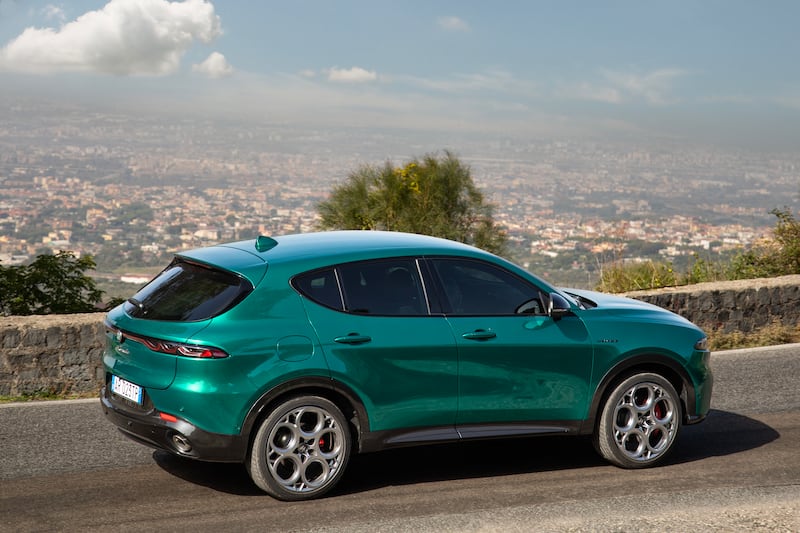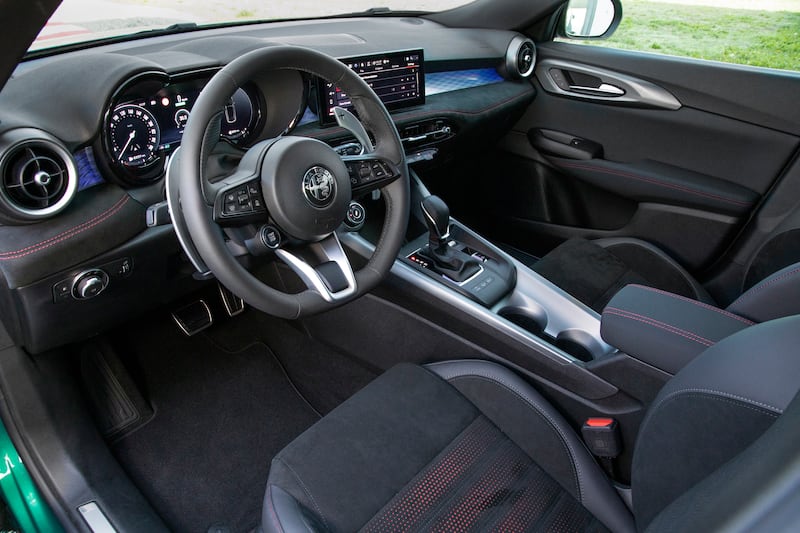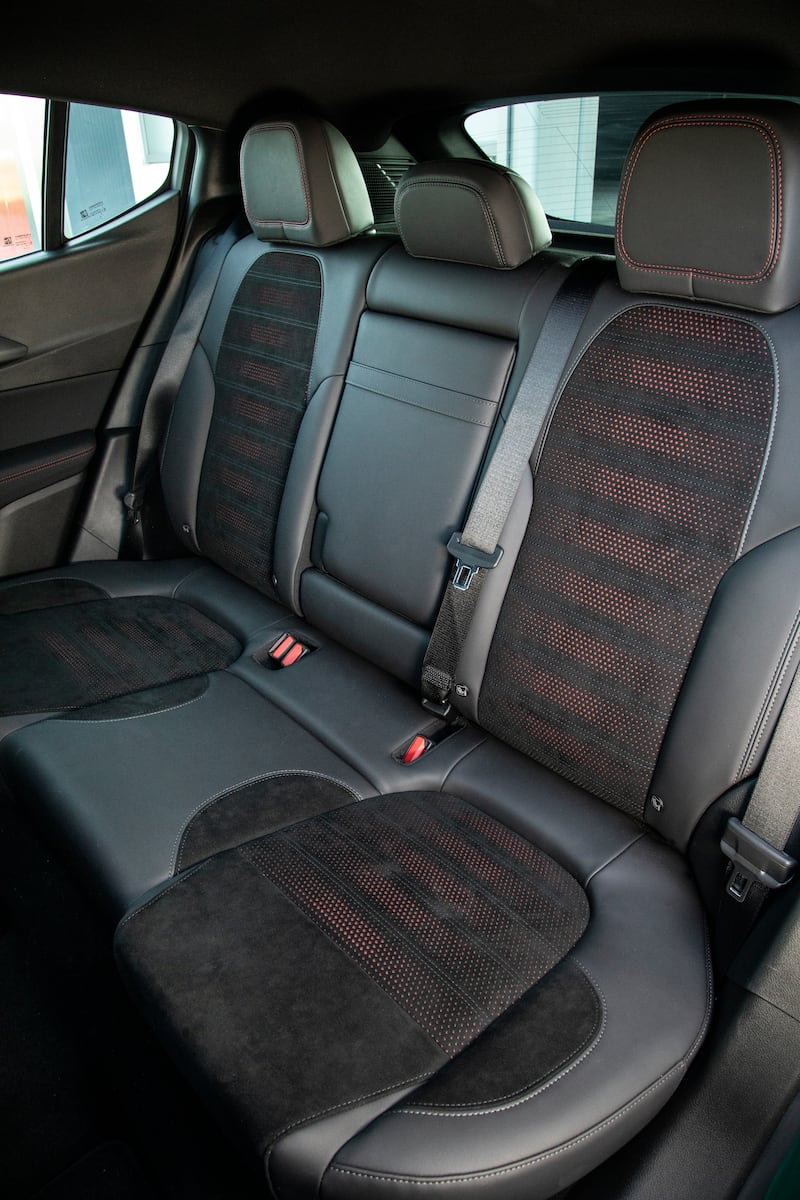How long can you live off your legacy? It’s a pertinent question for Alfa Romeo, which has been hanging its brand on a heritage that arguably peaked in the last century.
Now under the control of French parents at Stellantis, there is a case to be made that Alfa is supping at the last-chance saloon. The premium Italian brand has (yet another) five-year plan that will direct it towards an electric future. But for now, and for the sake of cashflow, it must compete in the cut-throat crossover SUV segment.
Enter the Tonale, Alfa’s existential crossover, aimed to deliver the cash and CO2 emissions cuts – courtesy of a plug-in hybrid version – to get the electric plan on the road.

Despite its natural home being in sporty saloons, Alfa bit the bullet some time back and delivered its own SUV, the Stelvio, but it failed to revive the brand’s fortunes. To avoid the same fate, the Tonale needs to stand out in an incredibly competitive mid-sized crossover market. Virtually every brand has a model in this race and the gap between premium and mainstream brands here is largely defined by price and prejudice.
ADHD gender gap: ‘Girls are constantly falling under the radar’
‘Why must we fight for our children’s basic rights?’ – Parents sleep out over lack of school places for pupils with special needs
How the Tate brothers won US backing for their release
Malachy Clerkin: Manchester United’s woes will turn the spotlight on Ruben Amorim before long
Alfa has turned to sister brand Jeep for quite a lot of the underpinnings for this car. It’s an understandable move, but hardly the strongest card to play if you want to stand out from the crowd.
The Tonale boasts some clear Alfa styling traits, from the headlights, a smart rear lightbar on the boot lid and a typical Alfa interior trim. The front nose is easily identified as Alfa and the rear is smartly tailored, but from the side profile it could be one of a dozen of crossovers. These high-set hatchbacks are incredibly cookie-cutter in profile and Alfa’s designers haven’t managed to bring anything new to the party from this perspective.
With the focus on driving fun, there are clear nods to the past, thanks to the features like the hooded twin dials and the DNA knob. There are some smart touches and in many ways it feels premium. Yet, in a digital age when rivals are embracing new screen controls, colours and textures, the Tonale’s tendency to black trim seems old school. Up against the likes of German rivals it really struggles to stand out.


First up is the 1.5-litre mild hybrid, putting out a decent 160bhp. The set-up does allow the car to run on electric, but only in a traffic crawl or car park manoeuvres. Alfa’s system has the electric motor housed in the gearbox. The real game changer for the brand will be the plug-in hybrid, delivering 271bhp in four-wheel drive format and claiming 80km of full electric driving in the city, or 69km in regular motoring. Power comes from a 1.3-litre petrol motor combined with a 90kW electric motor supported by a 15.5kWh battery pack.
Such figures seem decently impressive, but time spent in the 1.5-litre model suggests that while the Tonale delivers the sharper driving dynamics and a more engaging steering feel, it’s let down by a rather average powertrain.
First the positives, and the sharp, snappy steering is far closer to a sporty saloon than most crossover rivals can manage. Kudos to the Italians for this. Similarly there’s little body roll in the corners. Ride quality borders on the firm, even in normal or comfort mode, but it’s not enough to put us off the Tonale and certainly a worthy trade-off for the handling ability.
All this seems slightly wasted when you push on, however, and the engine set-up seems undersized for this car. Perhaps the huge metal gear selectors on our test Veloce-spec test cars overegged our expectations that this was a performance Alfa, but the seven-speed dual-clutch transmission that lies behind the levers is simply no match for the likes of BMW’s eight-speed ultra-smooth auto box.
Practically speaking, the Tonale delivers premium comfort up front, while the bootspace and rear legroom are on a par with German rivals. However, the sizeable C-pillar and sweeping side window line means rear visibility for children seems to be slightly restricted.
Quality remains a bugbear for the brand, but its charismatic new boss Jean-Philippe Imparato is adamant this issue can be sorted and the reputation repaired. The Frenchman, who revived the fortunes of Peugeot, has implemented a strict process regime he argues will ensure recalls and aftermarket fixes will be a thing of the past.
With prices likely to start at €45,000, buyers – and Alfa’s long-suffering dealers – will be putting a lot of trust in Imparato’s promises.
For all its importance, there is a sense that Alfa hopes its fortunes will be revived by a hoped-for resurgence in saloon and hatchback sales, coinciding with the arrival of its new all-electric Giulia.
As a cash cow to finance future plans, the Tonale is a sensible move by Alfa owner Stellantis. It delivers in terms of driving dynamics, but could really do with more performance heft if it wants to head down the heritage trail again and play up Alfa’s sporting pedigree.
The Italian brand seems to be caught between trying to be eco-friendly and sporting. The ultimate answer other brands have found is to embrace the performance potential of a fully-electric powertrain. The Tonale seems to be more of a stop-gap on Alfa’s route to that endpoint.














